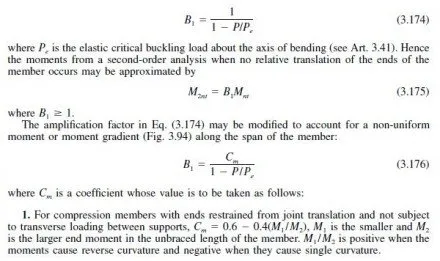The primary purpose of a highway bridge is to safely carry (geometrically and structurally) the necessary traffic volumes and loads. Normally, traffic volumes, present and future, determine the number and width of traffic lanes, establish the need for, and width of, shoulders, and the minimum design truck weight. These requirements are usually established by the owner s planning and highway design section using the roadway design criteria contained in A Policy on Geometric Design of Highways and Streets, American Association of State Highway and Transportation Officials. If lane widths, shoulders, and other pertinent dimensions are not established by the owner, this AASHTO Policy should be used for guidance.
Ideally, bridge designers will be part of the highway design team to ensure that unduly complex bridge geometric requirements, or excessive bridge lengths are not generated during the highway-location approval process.
Traffic considerations for bridges are not necessarily limited to overland vehicles. In many cases, ships and construction equipment must be considered. Requirements for safe passage of extraordinary traffic over and under the structure may impose additional restrictions on the design that could be quite severe.
Past AASHTO Standard Specifications for Highway Bridges did not contain requirements for a specified design service life for bridges. It has been assumed that, if the design provisions are followed, proper materials are specified, a quality assurance procedure is in place during construction, and adequate maintenance is performed, an acceptable service life will be achieved. An examination of the existing inventory of steel bridges throughout the United States indicates this to be generally true, although there are examples where service life is not acceptable. The predominant causes for reduced service life are geometric deficiencies because of increases in traffic that exceed the original design-traffic capacity. The LRFD specification addresses service life by requiring design and material considerations that will achieve a 75-year design life.

Deflection Limitations
In general, highway bridges consisting of simple or continuous spans should be designed so that deflection due to live load plus impact should not exceed 1â„800 the span. For bridges available to pedestrians in urban areas, this deflection should be limited to 1â„1000 the span.
For cantilevers, the deflection should generally not exceed 1â„300 the cantilever arm, or 1â„375 where pedestrian traffic may be carried. (See also Art. 11.21.) In LRFD, these limits are optional.
Live-load deflection computations for beams and girders should be based on gross moment of inertia of cross section, or of transformed section for composite girders. For a truss, deflection computations should be based on gross area of each member, except for sections with perforated cover plates. For such sections, the effective area (net volume divided by length center to center of perforations) should be used.
Stringers and Floorbeams
Stringers are beams generally placed parallel to the longitudinal axis of the bridge, or direction of traffic, in highway bridges, such as truss bridges. Usually. they should be framed into floorbeams. But if they are supported on the top flanges of the floorbeams, it is desirable that the stringers he continuous over two or more panels. In bridges with wood floors, intermediate cross frames or diaphragms should be placed between stringers more than 20 ft long.
In skew bridges without end floorbeams, the stringers, at the end bearings, should be held in correct position by end struts also connected to the main trusses or girders. Lateral bracing in the end panels should be connected to the end struts and main trusses or girders.
Floorbeams preferably should be perpendicular to main trusses or girders. Also, connections to those members should be positioned to permit attachment of lateral bracing, if required, to both floorbeam and main truss or girder.
Main material of floorbeam hangers should not be coped or notched. Built-up hangers should have solid or perforated web plates or lacing.



